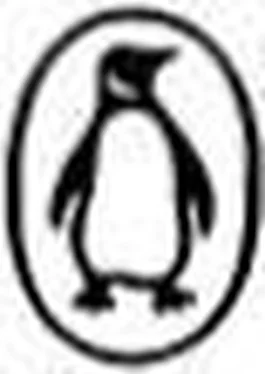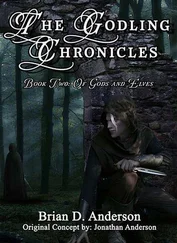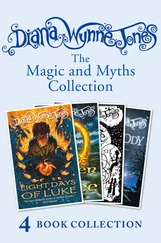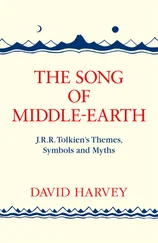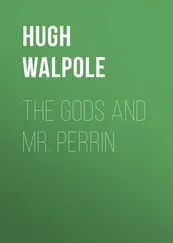Davidson, H. - Gods and Myths of Northern Europe
Здесь есть возможность читать онлайн «Davidson, H. - Gods and Myths of Northern Europe» весь текст электронной книги совершенно бесплатно (целиком полную версию без сокращений). В некоторых случаях можно слушать аудио, скачать через торрент в формате fb2 и присутствует краткое содержание. Жанр: Старинная литература, на английском языке. Описание произведения, (предисловие) а так же отзывы посетителей доступны на портале библиотеки ЛибКат.
- Название:Gods and Myths of Northern Europe
- Автор:
- Жанр:
- Год:неизвестен
- ISBN:нет данных
- Рейтинг книги:5 / 5. Голосов: 1
-
Избранное:Добавить в избранное
- Отзывы:
-
Ваша оценка:
- 100
- 1
- 2
- 3
- 4
- 5
Gods and Myths of Northern Europe: краткое содержание, описание и аннотация
Предлагаем к чтению аннотацию, описание, краткое содержание или предисловие (зависит от того, что написал сам автор книги «Gods and Myths of Northern Europe»). Если вы не нашли необходимую информацию о книге — напишите в комментариях, мы постараемся отыскать её.
Gods and Myths of Northern Europe — читать онлайн бесплатно полную книгу (весь текст) целиком
Ниже представлен текст книги, разбитый по страницам. Система сохранения места последней прочитанной страницы, позволяет с удобством читать онлайн бесплатно книгу «Gods and Myths of Northern Europe», без необходимости каждый раз заново искать на чём Вы остановились. Поставьте закладку, и сможете в любой момент перейти на страницу, на которой закончили чтение.
Интервал:
Закладка:
The World Tree
This world had for its centre a great tree, a mighty ash called Yggdrasill. So huge was this tree that its branches stretched out over heaven and earth alike. Three roots supported the great trunk, and one passed into the realm of the Aesir, a second into that of the frost-giants, and a third into the realm of the dead. Beneath the root in giant-land was the spring of Mimir, whose waters contained wisdom and understanding. Odin had given one of his eyes for the right to drink a single draught of that precious water. Below the tree in the kingdom of the Aesir was the sacred spring of fate, the Well of Urd. Here every day the gods assembled for their court of law, to settle disputes and discuss common problems. All came on horseback except Thor, who preferred to wade through the rivers that lay in his path, and they were led by Odin on the finest of all steeds, the eight-legged horse Sleipnir. The gods galloped over the bridge Bifrost, a rainbow bridge that glowed with fire. They alone might cross it, and the giants, who longed to do so, were held back. Near the spring of fate dwelt three maidens called the Norns, who ruled the destinies of men, and were called Fate ( Urðr ), Being ( Verðandi ), and Necessity ( Skuld ). They watered the tree each day with pure water and whitened it with clay from the spring, and in this way preserved its life, while the water fell down to earth as dew. The tree was continually threatened, even as it grew and flourished, by the living creatures that preyed upon it. On the topmost bough sat an eagle, with a hawk perched on its forehead: the same eagle, perhaps, of whom it is said that the flapping of its wings caused the winds in the world of men. At the root of the tree lay a great serpent, with many scores of lesser snakes, and these gnawed continually at Yggdrasill. The serpent was at war with the eagle, and a nimble squirrel ran up and down the tree, carrying insults from one to the other. Horned creatures, harts and goats, devoured the branches and tender shoots of the tree, leaping at it from every side.
Creation
The tree formed a link between the different worlds. We are never told of its beginning, but of the creation of the worlds of which it formed a centre there is much to tell. In the beginning there were two regions: Muspell in the south, full of brightness and fire; and a world of snow and ice in the north. Between them stretched the great emptiness of Ginnungagap. As the heat and cold met in the midst of the expanse, a living creature appeared in the melting ice, called Ymir. He was a great giant, and from under his left arm grew the first man and woman, while from his two feet the family of frost-giants was begotten. Ymir fed upon the milk of a cow called Auðhumla , who licked the salty ice-blocks and released another new being, a man called Buri. He had a son called Bor, and the sons of Bor were the three gods, Odin, Vili, and Ve. These three slew Ymir the ancient giant, and all the frost-giants save one, Bergelmir, were drowned in his surging blood.
From Ymir’s body they then formed the world of men:
… from his blood the sea and the lakes, from his flesh the earth, and from his bones the mountains; from his teeth and jaws and such bones as were broken they formed the rocks and the pebbles.
From Ymir’s skull they made the dome of the sky, placing a dwarf to support it at each of the four corners and to hold it high above the earth. This world of men was protected from the giants by a wall, made from the eyebrows of Ymir, and was called Midgard. The gods created inhabitants for it from two trees on the sea-shore, which became a man and a woman. They gave to them spirit and understanding, the power of movement, and the use of the senses. They created also the dwarfs, creatures with strange names, who bred in the earth like maggots, and dwelt in hills and rocks. These were skilled craftsmen, and it was they who wrought the great treasures of the gods. The gods caused time to exist, sending Night and Day to drive round the heavens in chariots drawn by swift horses. Two fair children, a girl called Sun and boy called Moon, were also set by them on paths across the sky. Sun and Moon had to drive fast because they were pursued by wolves, who meant to devour them. On the day when the greatest of the wolves succeeded in swallowing the Sun, the end of all things would be at hand.
Asgard
Once heaven and earth were formed, it was time to set about the building of Asgard, the realm of the gods. Here there were many wonderful halls, in which the gods dwelt. Odin himself lived in Válaskjálf , a hall roofed with silver, where he could sit in his special seat and view all the worlds at once. He had another hall called Valhalla, the hall of the slain, where he offered hospitality to all those who fell in battle. Each night they feasted on pork that never gave out, and on mead which flowed instead of milk from the udders of the goat Heidrun, one of the creatures that fed upon Yggdrasill. Odin’s guests spent the day in fighting, and all who fell in the combat were raised again in the evening to feast with the rest. Horns of mead were carried to them by the Valkyries, the maids of Odin, who had also to go down to the battlefields of earth and decide the course of war, summoning fallen warriors to Valhalla. Somewhere in Asgard there was a building with a roof of gold, called Gimli, to which it was said that righteous men went after death. There were other realms beyond Asgard, like Alfheim, where the fair elves lived, and as many as three heavens, stretching one beyond the other.
The Gods
As to the gods who dwelt in Asgard, Snorri twice gives their number as twelve, excluding Odin himself. Odin was the father and head of the Aesir; he was called All-Father, but had many other names, among them One-eyed, God of the Hanged, God of Cargoes, and Father of Battle. He journeyed far and wide over the earth, and had two ravens to bring him tidings from afar. His eldest son was Thor, whose mother was Earth. Thor was immensely strong, and drove in a chariot drawn by goats. He possessed three great treasures: the hammer Mjollnir, which could slay giants and shatter rocks; a belt of power which doubled his strength; and iron gloves with which to grasp the terrible hammer. Another son of Odin was Balder, said to be the fairest of all and most deserving of praise; he was white of skin and bright-haired, and was both wise and merciful. The gods Njord and Freyr were also dwellers in Asgard, but were not of the race of the Aesir. Njord came of the Vanir, and was sent to Asgard as a hostage when the two races were at war, and Freyr was his son. Njord controlled the winds and the sea, helped in fishing and seafaring, and brought men wealth, while Freyr gave sunshine and rain and the gifts of peace and plenty. Freyr possessed the ship Skíðblaðnir , large enough to hold all the gods, but small enough when folded to lie in a pouch, and also a wonderful boar with golden bristles. Another god was Tyr, who could give victory in battle, and it was he who bound the monster Fenrir and was left as a result with only one hand. There was also Bragi, who was skilled in the use of words and in the making of poetry. We hear too of Heimdall, who was called the white god, and was said to be the son of nine maidens. His dwelling was beside the rainbow bridge, for he acted as the gods’ warden, guarding heaven from the frost-giants. He could see for an immense distance, while his ears were sharp enough to catch the sound of grass growing on earth, and wool on sheep. He owned Gjallarhorn , whose ringing blast could be heard through all the worlds. There was also among the gods Loki, the son of a giant, who was handsome to look upon but given to evil ways. He was a cunning schemer, who both helped and hindered the gods, and he gave birth to the wolf Fenrir, to the World Serpent, and to Hel, the ruler of the land of death. These were the chief of the gods, and beside them were others of whom we know little: Ull, a famous archer and skier, Forseti, the son of Balder and a good law-giver, Hoder, a blind god, and Hoenir, who was sometimes the companion of Odin and Loki in their wanderings. The sons of the great gods, like Vali, Vidar, and Magni, had special parts to play, for they were to inherit the world of Asgard when the older generation had perished.
Читать дальшеИнтервал:
Закладка:
Похожие книги на «Gods and Myths of Northern Europe»
Представляем Вашему вниманию похожие книги на «Gods and Myths of Northern Europe» списком для выбора. Мы отобрали схожую по названию и смыслу литературу в надежде предоставить читателям больше вариантов отыскать новые, интересные, ещё непрочитанные произведения.
Обсуждение, отзывы о книге «Gods and Myths of Northern Europe» и просто собственные мнения читателей. Оставьте ваши комментарии, напишите, что Вы думаете о произведении, его смысле или главных героях. Укажите что конкретно понравилось, а что нет, и почему Вы так считаете.
